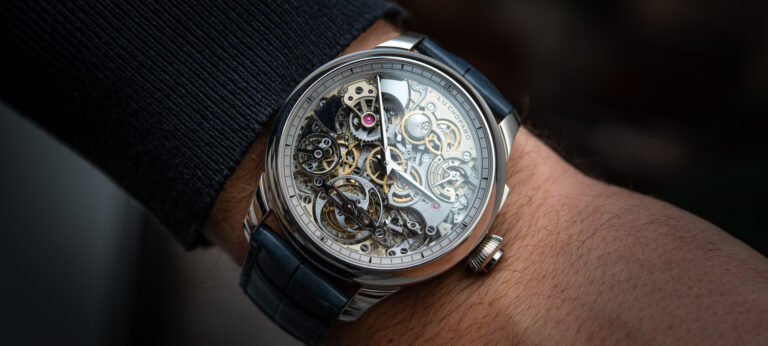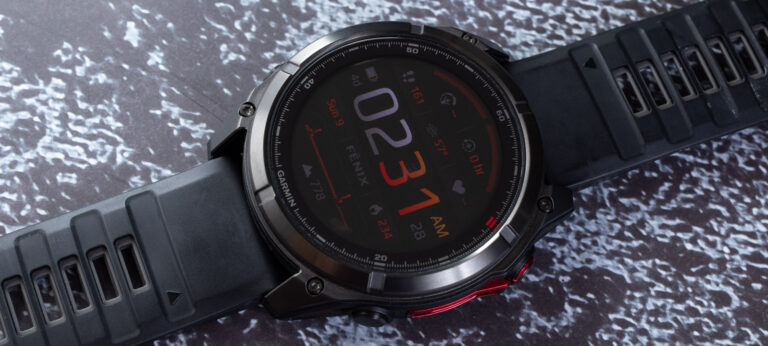Editor’s pick — Accessory quick take: key highlight (movement/specs for watches, materials/finish, limited run, pricing tier) in 1–2 lines.

Pre-owned watches posted quarterly gains in value for the first time in more than three years as prices for used Patek Philippe and Rolex jumped after U.S. tariffs on imported watches prompted a series of retail price increases, according to Morgan Stanley and WatchCharts.
After thirteen consecutive quarters of decline, the secondary market for Swiss watches finally saw a positive turn in the third quarter this year with prices rising by 1.5% from the previous quarter, the data compiled by Morgan Stanley and WatchCharts shows. It’s a welcome sign for an industry that has faced significant headwinds from tariffs, slowing demand and soaring input costs. However, a deeper dive into the data reveals a more nuanced picture, with a clear divide between the top-tier brands and the rest.

Secondary market prices have become a key metric for many watchmakers as they can reflect market sentiment and perceived value for a brand as well as buyer enthusiasm for certain models and styles. By indexing prices for the most traded models, the WatchCharts Overall Market Index can indicate wider watch market strength or weakness as consumers decide how and where to spend their hard-earned money.

Sources: WatchCharts, Morgan Stanley Research
The data shows the recovery was largely driven by the continued outperformance of Rolex and Patek Philippe, which together account for over two-thirds of the weighting in the WatchCharts Overall Market price tracker. Patek Philippe was the standout, with secondary prices climbing an impressive 3.9% quarter-over-quarter, marking its strongest quarter since early 2022. Rolex also posted solid gains of 1.3%, fueled by strength in its Classic collections like the Day-Date and Datejust.

But value retention indicators tell a different story as price increases for primary models at retail have eroded the level of value retained as indicated by secondary market prices, the data shows. Rolex remains the only brand whose watches consistently trade meaningfully above retail, with a value retention (VR) of +15.7%. Meanwhile, Patek Philippe’s overall VR has slipped into negative territory (-4.7%) due to a substantial 15% U.S. retail price increase, according to the report. Patek’s sports models like the Aquanaut and Nautilus continue to command significant premiums.

As for the major industry watch groups, a breakdown of the data suggests mixed performance on the secondary market.
- Rolex Group: Led all Swiss groups with a 1.3% QoQ gain, supported by strong performances from both Rolex (+1.3%) and Tudor (+1.4%).
- Swatch Group: Saw a modest 0.5% QoQ improvement, primarily driven by Omega (+2.0%). However, this was partially offset by weaker performances from Breguet (-3.4%) and Blancpain (-4.1%). Despite Omega’s strength, the group’s overall year-over-year performance remains down 4.7%.
- Richemont: Continued to see prices decline, though at a slower pace, down 1.7% QoQ. Cartier (+0.5% QoQ) remained a strong performer, and Vacheron Constantin posted modest growth (+0.2% QoQ) for the first time in over three years. However, weakness persisted in brands like IWC (-3.2%), A. Lange & Söhne (-3.3%), and Jaeger-LeCoultre (-5.2%).
- LVMH: Declines moderated to 1% QoQ. TAG Heuer (+1.5%) showed a mild rebound, and Zenith was stable (-0.4%), but Hublot (-2.8%) continued to lag. LVMH’s long-term performance continues to trail other Swiss groups due to a lack of a consistent performer with significant secondary market share, Morgan Stanley says in the report.

Despite the overall price recovery, value retention continued to weaken across most brands, driven by successive retail price increases. Five of the nine brands tracked—Patek Philippe, Cartier, Omega, Tudor, and IWC implemented additional price increases in Q3, according to the data. This trend is pushing more buyers towards pre-owned options, but it also raises concerns about regional pricing imbalances and the sustainability of demand.

While the positive inflection in secondary market prices is encouraging, questions remain about its sustainability. The surge in demand could be a temporary shift driven by retail price hikes and the 39% U.S. tariff on Swiss goods. The widening divergence between retail and secondary pricing trends suggests that market volatility is likely to continue as the industry adjusts and adapts to these new realities.
Source: www.hodinkee.com — original article published 2025-10-13 17:00:00.
Read the full story on www.hodinkee.com → [source_url]



